Everyone loves a good, loud, and trustworthy stereo as a companion on road trips, daily commute to work, grocery store trips, and for pretty much anything you can use your car for.
So, when you turn on your stereo and realize that your car stereo has power but no sound from speakers, your heart is bound to break.
But do not worry, we can help you patch it right up by understanding and solving the issue that is preventing your speakers from doing what they do best.
Usually, when a car stereo produces no sound it is most likely caused by a shorted or grounded wire, faulty head unit/fuses, defective speakers, or the setup is incomplete with the radio unit.
Let’s walk through these reasons and their solutions one by one to get to the root of this issue!
The first step in troubleshooting your vehicle radio is determining why it is receiving electricity but not producing sound via the speakers. This automobile audio problem is indisputable most of the time, and it is difficult to determine the underlying cause of no sound emerging from the head unit. Most people would have taken it to an electrical vehicle audio technician shop. Still, you may do it yourself if you have the correct set of information and direction supplied in this article.
It happens from time to time that the automobile audio receives electricity but does not create sound. This may result in a faulty ground connection in the vehicle. The cables run from the stereo system to the amplifier and back again.
If the sound is not coming from your car’s audio, this does not necessarily imply that your car stereo is broken. This problem might be caused by a problem with one of the car’s other components.
It is recommended that you choose a radio system from a reputable manufacturer for your vehicle. When purchasing a low-cost vehicle radio, it is not recommended that you save your money. Before purchasing a vehicle radio, be sure to have all the required features.
Table of Contents
Why Does My Car Stereo Have Power But No Sound From The Speakers?
If your car stereo has power but there is no sound coming from the speakers, it’s possible that there could be a problem with the wiring or a blown speaker. In such a situation, you should check various common car amp issues.
Why Is There No Sound from The Speakers?
Your radio is turned on, yet there is no sound coming from the speakers due to many factors. Here are some suggestions. If you are using an external amplifier, the problem might be connected to the amp or the speaker wiring.
The fuse for some amplifiers is located in the line, while others are located at the amplifier itself. If the fuse has blown, it is likely the cause of your inability to hear anything from your automobile radio.
Occasionally, a damaged wire or a faulty connection in the speaker cables where they travel through a door might cause the sound to be turned off completely rather than simply turning off the sound with one speaker alternatively if you notice that your sound returns after opening and closing the door, this might indicate a problem with the grounding of the system.
Car Stereo: What Are Its Functions?
Even though I won’t discuss how automobile radio systems operate, it’s crucial to understand how they work. First, just go through the list of the various components:
The head unit is the head unit, the radio’s face, which includes controls, dials, a touchscreen, or both. In addition to volume controls, it has all of the hardware and software necessary to make file reading, USB, AUX, Bluetooth connections, and other functions.
What the amplifier does is precisely what its name says – it magnifies the incoming signal from the head unit to make the sounds coming from the speakers louder and more audible. Most aftermarket and original head units are equipped with a pre-amp capable of driving a simple pair of speakers with little distortion.
To produce air vibrations, speakers turn the signal into what we perceive as sound.
The wiring links the head unit towards the antenna, the amplifier, and the automobile battery, among other things. If an amplifier is installed, it is connected to the vehicle’s batteries and all speakers within the vehicle.
Lack Of Sound from The Speaker: Causes
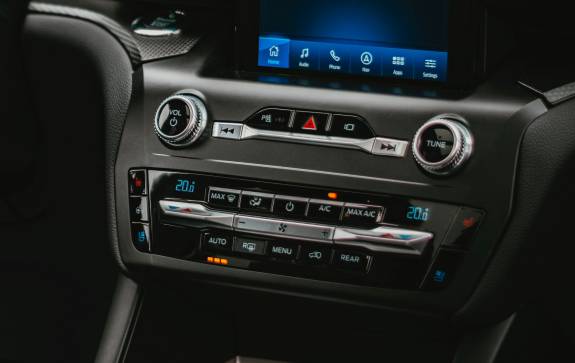
Reason #1 – Problems with the amp and head unit
Sometimes, if the head unit seems to be turning on, people tend to rule out them as the cause and quickly assume that the speaker might be dead. However, it is essential to keep in mind that the head unit turning on and not providing any sound is indicative of something wrong.
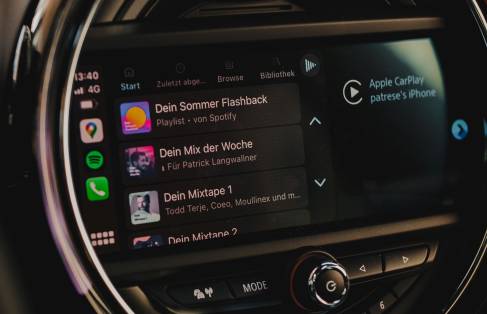
Solution: Before checking any other component, you would want to:
- Ensure that the head unit has not entered the anti-theft safety measure which needs a certain radio code.
- Perform a test check on all the audio inputs i.e., auxiliary input, radio, CD player, etc.
- Check the fade, volume, and pan settings.
- Test any or all onboard uses.
- Check for disconnected or loose wires or cables
In case you do not seem to find any problems within the head unit, it’s time for you to take a look at your external amplifier if you have one. For most of the cars with pre-installed integrated car audio systems that also use external amplifiers, both aftermarket and OEM, the amp turns out to be the leading cause of the said problem as the audio is required to pass through the external amp to reach the speakers.
Solution: While checking the amp for faults, ensure to follow these steps:
- Ensure that the amp is turning on completely
- Verify whether the amp has entered into protection measure or mode
- Look for unplugged or loose output or input speaker cables
- Inspect the onboard and inline fuses carefully.
Note: It is essential to note that there are various common car amp issues that you can pinpoint and attempt to fix by yourself, you may encounter a scenario when the amp might seem alright even if it has already failed. While dealing with such an issue, you would need to begin by bypassing the amp to ensure that the speakers, as well as the head unit, are functioning properly.
For this procedure, it would be advised to acquire the help of a mechanic.
If your head unit has been functioning OK, then all of a sudden, all of the speakers have stopped working, it is quite probable that you have a blown speaker in your vehicle.
The head unit would light up and sometimes even play CDs if you have got a blown or grounded out speaker, but no sound will be produced by it. Since its inbuilt amplifier seems to be in protect mode, this is the case.
That’s right, and you read that correctly. Head units, like amplifiers, feature a protection mode that may be activated when necessary. Furthermore, when a head unit enters protective mode, there is usually nothing visible to indicate that it has done so, such as a blinking red indication.
So, essentially, you have to check each of your speakers with a multimeter to ensure that they are working properly.
To assess the resistance of a speaker, switch your multimeter to ohms and connect the leads of something like the multimeter to the terminals of the speaker.
If the speaker’s resistance is less than one ohm, the speaker is operational. The speaker may behave blown if it displays an infinite resistance reading.
Even though none of your speakers have blown, double-check that they are all securely fastened to their mounting holes. The reason for this is that if for some reason, any one of your speaker’s magnets, for example, comes into contact with the door metal, you will not hear any sound through your speakers.
Fuel Element Must Be Replaced
It is common for a vehicle radio to contain at least one fuse to safeguard the unit from problems like power surges or even other electrical malfunctions. If there is excessive electricity flowing through the audio system, this fuse would blow and disconnect the circuit, allowing the main radio to be saved. Fuse boxes for the entertainment system are available in various sizes on modern vehicles.
If you’re familiar with a basic voltage meter or electrical continuity meter, checking the fuses should be a pretty simple task. It is common for the problem to be resolved by replacing the defective fuse. If, on the other hand, the new fuse fails to function properly shortly after it is fitted, it is likely that another fault with the electrical system has arisen.
The Car’s Poor Ground Connection Is to Blame
A properly connected ground sustains the sound produced by a car radio. The ground belts wear down with time, and as a result, the ground connection becomes erratic. The wires are connected to the automobile battery, and it is via this connection that the car audio operates.
Because of rust, the wires regularly wear out, and the electricity does not reach the car entertainment system as intended. Because of a shortage of electricity, the automobile audio cannot make any sound.
Because of the faulty connection, the car’s electrical system has been completely wrecked. If the sound also isn’t coming from car audio, it is recommended that you examine the ground connections of your vehicle. You should inspect the ground wires in your automobile.
It is not acceptable to have any corrosion or paint all-around ground wires. Corrosion and paint damage the ground connection, which is a safety hazard. The electrical connection should be tested with a voltmeter if there’s no corrosion or paint around the ground wires.
For the vehicle audio to play music, it must have the appropriate quantity of voltage. These faults cause the voltage system to be disrupted, resulting in no sound produced by the car audio. Some automobiles are equipped with extra amplifiers linked to the car audio.
Head Unit Wiring That Isn’t Tight
It is necessary to acquire access to the head unit’s rear to verify its wire configurations. This is not as simple as you might assume since car stereos are intentionally difficult to eliminate as an anti-theft device to discourage theft. If you want to learn how to remove an aftermarket radio, I’ll provide a link to a video that teaches how to do it, but you’ll have to do your study to figure out how to do so without harming the dashboard or the head unit.
Pulling the head unit back but only enough to allow it to tilt out of another dashboard should be done slowly. Take the time to inspect every cable and connector to see if they have become loose and pay attention to any other loose connectors inside the dashboard. Keep in mind that these might have been purposefully left unconnected, so consult the installation instructions for your head unit to identify the exact number and kind of connections that are required for your device. Upon completion, switch on the stereo to ensure it functions properly, and then replace the head unit in its original location.
Reason #2 – Issues with the car speaker wires
When you move on to inspect the pan and fade settings situated on the head unit, it is highly likely that you might discover that they were set to speakers that have failed or shorted. This would have led you to get sound by switching to a speaker that works. In such a case, you are dealing with an issue within the car stereo’s wiring or faulty speakers.
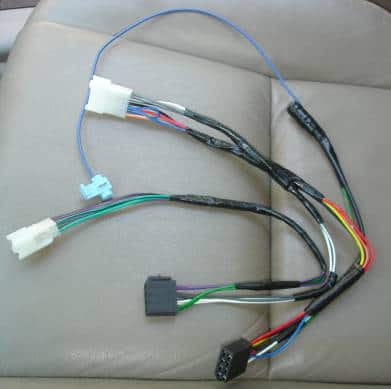
Solution: As the speaker wires are more often than not routed from behind or beneath the molding and panels, carpet, and seats; this makes the task of inspection quite hard.
Taking your current scenario into account, searching for continuity from one end of the wire to the other end of the speaker might be the easiest way to determine the issue.
In case you cannot seem to find any continuity, this indicates that the wire might be damaged somewhere. In the other case, if you find continuity to the ground, then it is highly possible that the wire has shorted. You need to acquire the help of your mechanic to change the wires.
Note: If you have speakers mounted in the doors, then you should consider the common cause where the speaker wire passes through the door frame and the door. Even though the door wire harnesses are usually coated by durable rubber sheaths for protection, it is still possible for the wires to find a way to break due to time and repeated external stress caused by the constant closing of doors.
You might want to inspect for a continuation of wiring and shortages with the door open and closed. If you discover that the speaker has shorted to the ground, this can lead to all speakers cutting out.
Amplifier Or Preamplifier That Has Failed
The amplifier is responsible for converting the stereo signal into something the speakers can understand. If it fails, you can anticipate a loss of sound, distortion, or strange noise emanating from the speakers.
Some preamps cannot be removed from the head unit, and even if it is feasible to replace it, it may be difficult to locate a used preamp that is not offered as part of a package that includes a head unit. The good news is that the whole amplifier is completely autonomous and can be replaced with any other alternative you like. Make a note of the multitude of channels and other technical parameters of the amplifier you’re replacing before starting your project.
Reason #3 – Problems with the car speakers
There is one more method to check the speakers and as well as check for poor wiring simultaneously by obtaining some speaker wires and simply try and run new wires to the speakers.
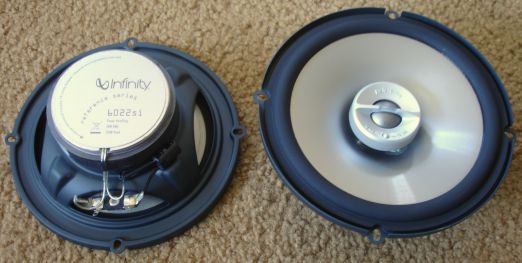
Solution: It is essential to keep in mind that this is a temporary and DIY method, you would need to access the speakers by carefully removing and taking apart the trim, door panels, and other parts, but you will not actually need to route new wires completely.
If your speaker works with new wires, it is safe to assume that the fault lies within the older and damaged wiring, and a set of new wires should get your job done!
You can also attempt to inspect the car speakers at home by plugging out the wiring harness from the head unit and then connecting the negative and positive ends of each wire to the electrical terminals of a 1.5 volts battery. In case the speaker wires are intact, you should be able to hear a pop sound when the wires touch the terminal.
Note: It is crucial to keep in mind that even if you hear the pop sound, it does not ensure that the speakers are in great working condition.
If There Is No Remote, The Wire Must Be Turned On.
A remote turn-on wire seems to be a blue wire (usually with a white stripe) positioned behind the head unit. It is used to turn on the vehicle. It’s in charge of turning on and off your amplifier when the button is pressed.
Essentially, when the head unit is turned on, a +12 volts’ direct current signal is supplied through the turn-on wire to the amplifier’s turn-on circuit; whenever the amplifier detects this voltage, it switches on the amplifier. Similarly, when the head unit is turned off, the remote turn-on wire ceases to convey signal/voltage, and the amplifier is turned off due to this.
If this wire is broken or not properly fitted, your amplifier will not switch on, even if it has proper power and ground connections. Consequently, you will not be able to hear anything from your speakers.
While setting up a new aftermarket head unit, most novice installers left this wire unconnected, resulting in no sound coming from the speakers.
It must be noted that almost all automotive radio harnesses also include a solid blue wire running through them for convenience. This wire is often used to switch on the power antenna or factory amplifier; it should not be mistaken with the remote turn-on wire with blue/white stripe on the end of the wire.
The amplifier will only operate while the radio is in AM/FM mode if you’re using a power antenna wire (solid blue wire) instead of the remote turn-on wire (blue wire with a white stripe). If you change the input to a CD, SD Card, Aux input, Bluetooth, or any other device, the power antenna wire will no longer receive power, and your amplifier will shut down as a result of this.
Reason #4 – Car speakers are blown out
If you have tried and tested the above-mentioned methods and scanned the wires with great diligence but haven’t been able to get a single sound from your speaker, you might be facing a coincidental and circumstantial shortage or failure. This can occur due to general wear and tear that the speaker experiences in terms of high volume, overheating, too much stress, etc.
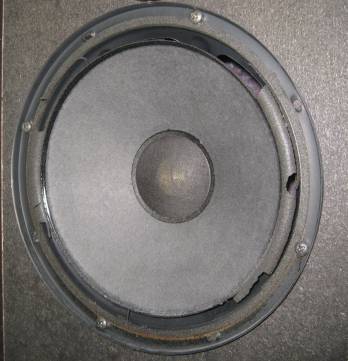
Solution: In such a scenario, it is best to replace the car speakers with new ones. You can take this as an opportunity to invest in some durable and good speakers, such as the Pioneer 2 way speakers.
With a good set of speakers, you are less likely to encounter such issues in the near future.
FAQs
Is There a Fuse for The Speakers in The Car?
Fuse boxes for car speakers are not usually present, although those for the head unit and amplifier are. If a short occurs anywhere else in the system, the fuse would be blown to prevent further damage and an electrical fire from resulting from the short.
Is It Possible for Speakers to Stop Work Because Of a Blown Fuse?
This is the case because the fuse is designed to be a weak point in the electrical system. If there is a power surge or a short circuit, the fuse will blow, and the circuit will be disconnected, preventing any other, very much more expensive component from breaking as a result. Fuses can fail at any time; however, they often fail when there is a problem only with wiring or the power source.
What Is the Cause of My Radio’s Power but Lack of Sound?
This article has covered every possible reason for a stereo’s inability to produce sound while using a working stereo. One final point to highlight is to mute the button, which you may have accidentally hit when taking a phone conversation and then forgotten to turn the volume back up.
Is It Possible for A Fuse to Explode for No Apparent Reason?
Even though they are quite reliable, such a fuse can blow at any time, just as any other component. As previously said, you should continue to keep a check on the fuses to ensure that the failure was due to a random event rather than an electrical fault.
Conclusion
Your speaker could stop producing sound for various reasons such as shorted wires, blown fuses, issues with the head unit and amp, or it could also indicate that your speaker cannot take any more stress and has died.
Before deciding upon changing the speakers, you should inspect carefully for the above-mentioned issues and if everything seems to be running smoothly, it might be time to invest in some new speakers.
Your vehicle audio is your best non-human companion when you’re driving. It keeps you attentive, it keeps you bouncing to your favorite tunes, and it just plain makes you glad to be around it all.
Following the methods outlined here will make it much easier for you to fix it on your own if something goes wrong. Make sure you have the gear you’ll need in your car, such as an ohm reader, such that you’ll be prepared at all times if your cherished car audio becomes silent.
